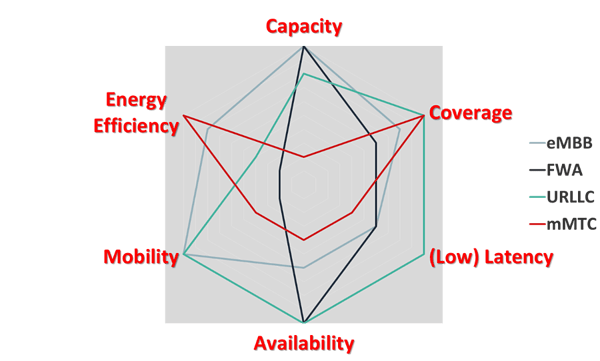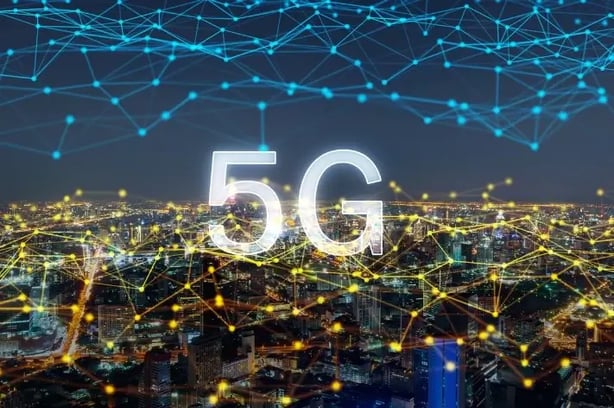The introduction of a new cellular generation is a delightful, and meaningful, event. The 1st generation introduced mobility. The 2nd generation [or: 2G] brought us into the digital world. The 3rd generation, in turn, introduced mobile data. And the 4th generation created the mobile broadband world in which we live today.
And now comes 5G…
Unlike previous generations, which took us a single step forward (though it was usually a very big one), the 5th generation takes us multiple steps in multiple directions. Enhanced mobile broadband (eMBB) applications are a big step forward in terms of increased capacity available for mobile subscribers (over 1Gbps per customer at peak rate), enabling applications like virtual reality and augmented reality. Other applications, however, take us in different directions that allow new services to new addressable markets. Those new applications include: massive machine-type communications (mMTC), enabling massive IoT applications like automatic meter reading and automated agriculture; and ultra-reliable low-latency communications (URLLC), enabling mission-critical applications like autonomous drones (for delivery and other uses) and autonomous vehicles.
Those applications, on top of the fixed wireless access (FWA) application, make 5G a different type of generation – with a bigger change from one generation to another – than experienced to date. This is very exciting for mobile operators, ISPs and any other operators that see an opportunity in the new 5G technology. But it also comes with a price. That price is major network and operations challenges arising from network and service evolution towards 5G. And these challenges, much like the 5G opportunity, are multidimensional. They are relevant for all parts of the network – from access, via backhaul, through the core.
The first multidimensional challenge the need to deploy more sites. This need derives from higher capacity per area and from the use of higher RAN frequency bands, which require much shorter distances between cell sites and end devices. This means massive network densification – with up to five times the number of cell sites in certain parts of the network – compared to existing 4G infrastructure.
The second multidimensional challenge is capacity, much more capacity. This need derives from the total capacity per end device and from the increased number of end devices.
The third multidimensional challenge is enabling 5G use cases and the co-existence of multiple services over the same network.The challenge derives from the different nature of those services in terms of network requirements, as illustrated in the following diagram:
Key network requirements of various 5G applications

This calls for service orchestration and techniques like network slicing and segment routing, which are not trivial tasks in today’s networks.
The last multidimensional challenge is mass deployment, or the “scale & skill” challenge.
The fact that network densification will increase significantly, combined with time-to-market challenges for new services, markets and geographies, will result in a challenging operational environment. Thus, there is an urgent need to introduce advanced automation tools that will keep the scale of the operations organization, as well as the skills required from it, at a level that enables meeting business goals.
Those three multidimensional challenges create a fast-growing “challenge curve.”To keep up with (and, preferably, stay ahead of) this challenge curve, technology innovation needs to accelerate and diversify. Can traditional and monolithic innovation approaches succeed, or do we require a new innovation approach for meeting such challenges? The answer, most probably, is we need a new approach. We will discuss this new innovation approach in next week’s blog post.


